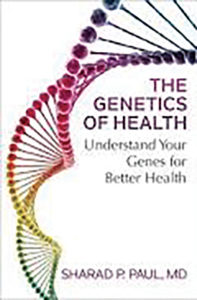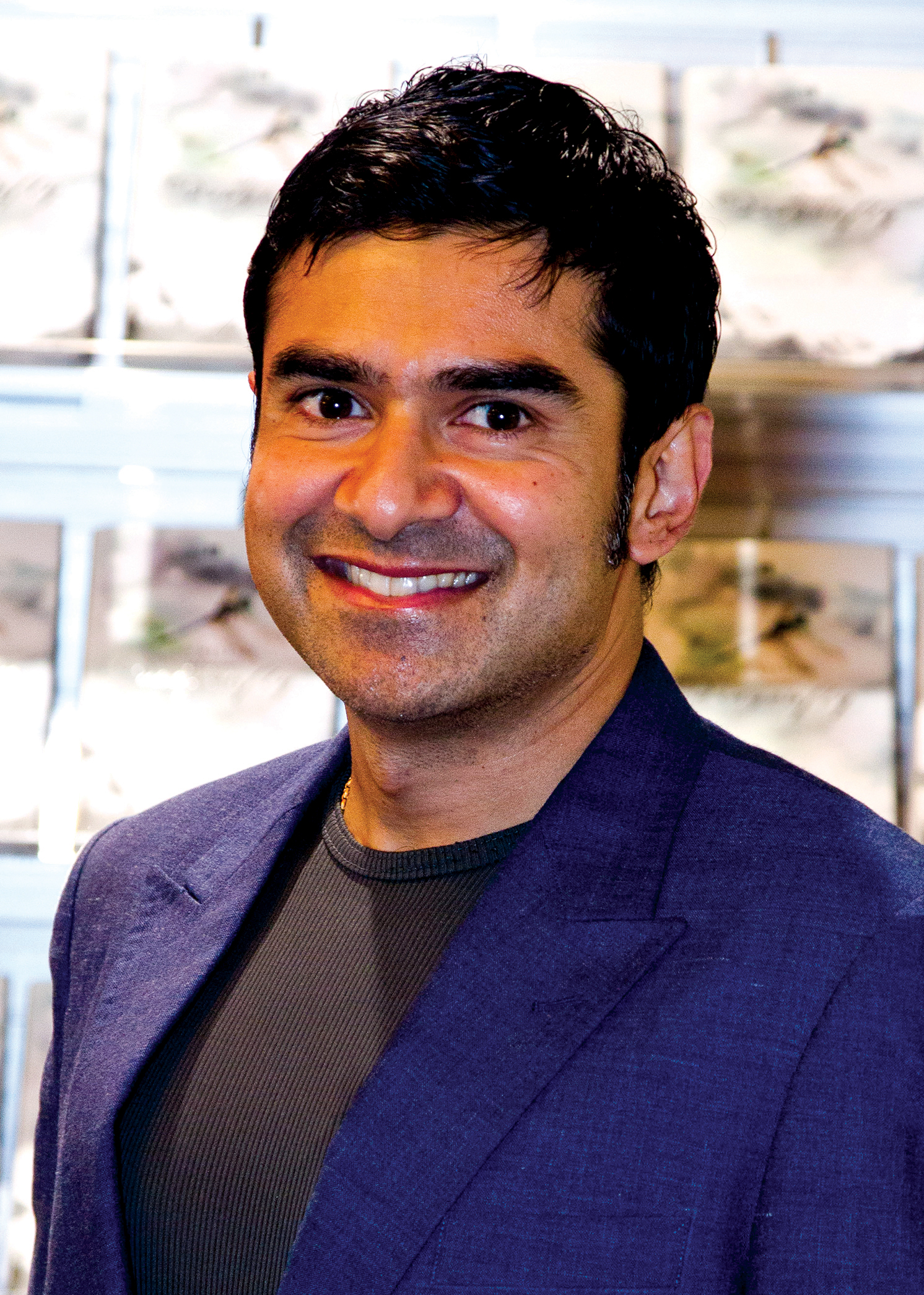On his way back from the Jaipur Litfest where he promoted his new book, this indian doctor settled in new zealand reveals his plans to bring genetic testing to india to help us finetune our diets
Dr Sharad P Paul looks so young and trim, the ushers at the Museum of Natural Science in America (where he was recently a Distinguished Speaker) tried to deny him a front seat at his own session, thinking he was just a young hangabout.
At nearly 53, he doesn’t even look 40, and his skin glows as if advertising the fact that he is a skincare specialist — among other things. “You can’t have bad health and good skin,” he says succinctly by way of explanation.
He’s in India to promote his sixth book at the Jaipur and Mathrubhoomi litfests. Plus, he has written three medical textbooks, and is one of the Indian doctors who did pathbreaking work abroad, winning the Ko Awatea international excellence award for a leading health improvement on a global scale.

After obtaining his medical degree in Chennai, he went to New Zealand 28 years ago when it was not easy to get a residency there, and some doctors even ended up driving taxis till they could get through the qualifying exams. Later the USMLE (American exam) was accepted as the initial pathway. Indians are just 1 per cent of the population even now, while the Chinese are 5 per cent.
In 2012 he received New Zealand’s highest medical honour, given to one doctor at a time. So is his specialisation in skin cancer due to the hole in the ozone layer in that part of the world? “That’s actually a myth,” he says.
“New Zealand is a country with no pollution, so the UV index of 10 or more is high. India’s UV index averages 6, and it gets filtered by the pollution. Both North and South polar regions have higher UV intensity but the ice of Antarctica reflects it back, making it worse.”
With his own research lab, medical practice and professorial teaching job at Auckland University, plus some philanthropy, he has already treated about 1.5 lakh skin cancer patients. He does a lot of reconstructive surgery after skin cancer, but his heart is in preventative health or wellness, which is why his latest book The Genetics of Health talks about how “Our evolutionary past and genetic makeup determine how and why the body works the way it does”.
The book has a liberal sprinkling of case studies, and is meant for the lay reader, in the hope that better health can become a goal for ordinary people who want to take charge of their own health. And for those who don’t read books, there are at least 50 podcasts from around the world and at least one very informative TEDx talk, all available on the net and his website.
One of the most fascinating findings by genetic specialists like him is how unique every individual is, which is why one diet plan doesn’t fit all. “Our dark skins don’t absorb Vitamin D well, and as vitamin D is our calcium regulator we are at greater risk of heart disease, especially as Indians consume a fair bit of calcium via dairy products” (explained in his previous book Skin, a Biography). Brahmins became fair because they were pure vegetarians, and over centuries the skin lightens to try and get more vitamin D and not for any other reason. When ancient people migrated to the sub-continent from Europe, skin darkened to preserve folic acid.
This is explained in his TED talk titled: The Myth of Race.
So what does he recommend? “People should get seri ous about tackling health problems like stress and hypertension early, before it becomes an ailment. Yoga reduces stress, but studies have shown that dance is even better for brain function and reduces dementia or Parkinson’s disease symptoms. One has to choose one’s form of movement according to age. While tango is best for Alzheimer’s, students might be better off doing endurance exercise such as running.”
Processed food is anathema for him, as it should be for everybody — he can taste the salt even in a cookie that has come out of a packet.Fresh snacks should be made at home rather than picked up readymade. In fact, he recommends that we shun packaged foods and instead snack on seeds and dry fruit. “Ancient man needed just 1.5 gram of salt,” he points out, “whereas a packet of instant soup has over 800 mg.”
So should we go for genetic testing (his own test available internationally tests for 21 different genes to optimize diet and exercise) to find out our individual makeup? “That is only if you want to take your quest to the next level,” he says. “If you are obese, it need not be because of bad lifestyle but sometimes your individual genes.
“Genetic tests could tell you whether you metabolism caffeine slowly, whether you are among the 20 per cent of the population that doesn’t have the gene that helps absorb Vitamin C, whether high-protein diets will work for you or if you are suited to power training.” He hopes to bring a testing facility to India soon. Currently the test is available internationally (but not in India) and can be ordered online.
Another factor that he says is wrong in Indian diets is the ratio of Omega 3 to Omega 6, which in ancient man was almost equal but in India is highly skewed in favour of omega-6, populations with higher omega-3 ratios have lower incidences of diabetes, rheumatoid arthritis and heart disease. Foods like walnuts and flaxseed oil have Omega-3 and higher levels are found in fish oils.
In short, the doctor’s mantra is ‘Eat, Move, Live’ which means a correct diet and proper movement will help you optimise your performance. Reading the book will obviously give a better understanding of the science behind it all. Or visit his site www.drsharadpaul.com
The absurd and the sublime
“Be amazed. Be informed. Be proud. Above all, be inspired,” reads the blurb of the 2019 edition of the Limca Book of Records (Hachette hardcover).
takes a dive into this volume to identify a few inspiring, a few unbelievable, and a few absurd records that were featured in the book this year.
1. Only woman samurai: Samurai Reshma Lalwani from Mumbai received the 6th dan from the International Goju-Ryu Karate-do Federation.
2. Heaviest Shahi Tukra: The heaviest shahi tukra which weighed 387.68 kg was made at the Manipal University, Jaipur.
3. Largest newspaper collection: ‘Paperboy Shashank’ or Shashanka Sekhar Dash from Odisha has collected 5,000 newspapers since 2001. He owns 3,584 different newspapers in 66 languages from 76 countries.
4. First Transgender Principal: Dr Manabi Bandopadhyay became the principal of Krishnanagar Women’s College in Nadia District in West Bengal, in 2015.
5. Most popular app: Netflix and Tinder are the most popular in India.
6. Every dog has its day: The Mudhol Hound is the first Indian dog breed to be introduced in active duty in the Indian Army
7. A helping hand: The Blind Relief Association School in Delhi set up a cybercafe up in 1996 to help train the visually impaired for desk jobs.
8. Box-office break: Dangal surpassed the 1000 crore mark internationally in 2016 and broke the box office records.
9. First known Kathak teacher: Pandit Birju Maharaj has been a Kathak teacher since he was 13 (since 1951), and is a recipient of the Padma Vibhushan in 1986.
10. First Female Rapper: Taran Kaur Dhillon, more popularly known as Hard Kaur, started her career in the UK.
11. Fastest All-India solo tour: Sohail Ahmed from Delhi covered a distance of 16,143 km in 23 days, 11 hours and 27 minutes.
12. State with smallest voter turnout: Jammu and Kashmir (49.52 per cent). However, interns of voters registered, it was Lakshwadeep.
13. Most career goals scored in Football: Sunil Chhetri with 64 goals in 102 matches.
14.First medal for Asian Para Games in powerlifting: Farman Basha won a bronze in the 48 kg category at the inaugural Asian Para Games in China.





